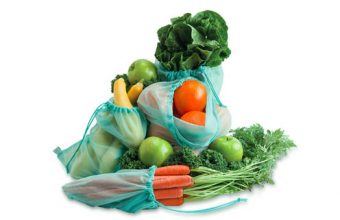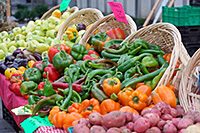We all want to live well, but those impending costs at the organic store’s cash register can be hard to swallow.
It may be discouraging to think that 1,000 calories of junk food costs $1.76 compared with $18.16 for 1,000 calories of the healthy stuff, according to a 2007 University of Washington study. Still, the benefits of eating healthy are insurmountable.
If you want to have your organic veggies and eat them too, consider these six ways to eat healthy on a slim budget:
Cut out the middleman
If you’ve ever been to a local farmers’ market, you’ll see truckloads of produce, exuberant children chasing after one another in a game of tag, and local merchants lining makeshift aisles, some of them timidly glancing in your general direction from time to time. That’s because most farmers are not born and bred salespeople’they’re producers. That isn’t to say they don’t want your business. Make connections with local producers and offer to pick up their products on a regular basis for an agreed-upon amount of money. By reaching out, you have a pretty good chance of scoring a decent deal on what they can offer you.
Don’t be a victim of labelling
While food labels are typically in place to help consumers understand what they’re purchasing, there are certain labels out there that hold no validity through the legal system or otherwise. In short, these words will make you feel better about buying the product, but they may not necessarily be better for you. According to Bicycling.com, the following terms don’t necessarily hold any weight in the context in which they’re used: natural, free-range, cage-free, antibiotic-free, chemical-free, hormone-free, rBGH-free, eco-safe, environmentally friendly, and green. Beware the lure of the label.
Soup, soup, soup
You’ve heard it before and we’re telling you again: water is the key to one’s well-being. When you buy organic meats and vegetables, you can increase how far the food (and nutrients) go when you turn that meal into a broth. While this is a great way to cut costs on meals, it’s also much healthier for you. When you heat your food, you destroy more than 30 percent of that food’s nutrients. But since water has the capability to absorb those forgotten nutrients, soup is your key to locking in many of those vital ingredients.
Juice, juice, juice
Similarly, juices also serve as a way to lock in nutrients. Your body naturally loses many of the nutrients in food during the digestive process. It takes a lot of energy to break down food. By juicing, you’re able to retain many of those nutrients, much more of your energy, and since much of that mass is water, you’re cutting costs on food yet again.
Inspire a community garden
It doesn’t get more inexpensive than doing-it-yourself. Inspire a community garden that everyone on the block can contribute to and take advantage of. You can plant potato sprouts, avocado pits, seeds from fruits, and all sorts of things you’d otherwise be disposing of in the trash. What a waste (literally) to not do it! Furthermore, you can apply for grants to help fund your community garden project. Check out Evergreen.ca or other local funding programs to find out how.
Become part of a co-op
Take a stroll through your neighbourhood’chances are you’ll stumble upon a co-op food store. In the smaller scheme of things, you can volunteer your time in exchange for co-op member-only prices on organic food. In the grand scheme of things, your time and support may help spark a larger movement that could one day change the way your grandchildren source and eat food. In both cases, the outcome leaves you feeling richer.
So it comes down to this: eat well or eat cheap. Or, look for ways to curb costs while enjoying a happy, healthy, and wealthy lifestyle. After all, living well should encompass living well within our means, too.
Tagged under: food,green,Organic,vegetables,fruits,farmers' markets,healthy eating,sustaibable,co-op
Category: family-finance






